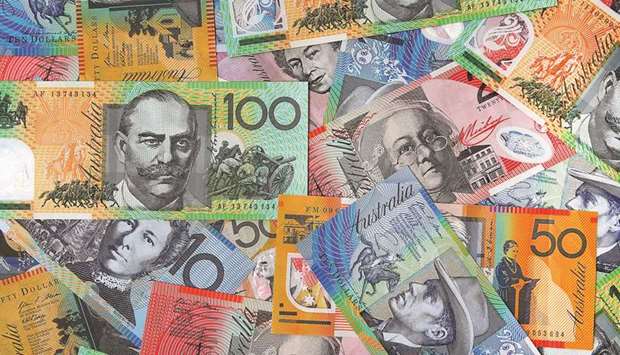The Australian dollar could find long term relief from cyclical downturns if the country’s government decides to take climate change seriously, according to ABN Amro Bank NV.
The Dutch bank expects the country’s focus to turn toward environmental policies after wildfires wrecked havoc on the economy and hurt the currency.
A switch to a greener economy could alter the fundamental performance of the Aussie, making it less driven by global risk sentiment, says its senior foreign-exchange strategist Georgette Boele.
“The character of the Australian dollar could change if the government makes climate policy and reaching the Paris Agreement more of a priority,” she said in a note to clients.
“The Australian dollar will probably become less cyclical, less commodity-driven, and less dependent on the state of the Chinese economy and more driven by the state of the domestic economy.”
The Aussie dollar has suffered from the spread of the coronavirus, which is seen as impacting Chinese demand for Australian commodities. yesterday, it declined 0.5% to 66.80 US cents after an Apple Inc sales warning highlighted the larger-than-expected economic impact of the virus.
It is among the worst-performing Group-of-10 currencies this year, leading losses alongside fellow risk-sensitive currencies the New Zealand dollar and Norwegian krone, having dropped almost 5% in 2020.
While ABN Amro notes the current Australian administration remains uninterested in shifting climate policies, public opinion is changing after the bush fires.
There’s also the possibility the government could be forced via litigation to meet climate policy goals as in the Netherlands, Boele said.
Yet even if the Australian economy does become more environmentally sustainable, the transition would be a tough one in the short term for the Aussie.
A sizeable cut in coal, LNG and agricultural exports would reduce carbon dioxide emissions from mining and transport but would also result in lower export revenues, Boele said. “The results of investment and lower CO2 emissions would only become visible over time – years or even decades,” she said.
“So in the coming years the fundamentals of the Australian economy will probably deteriorate, and this could weigh on the Australian dollar.”

Australian dollar banknotes of various denominations are arranged for a photograph in Sydney.
